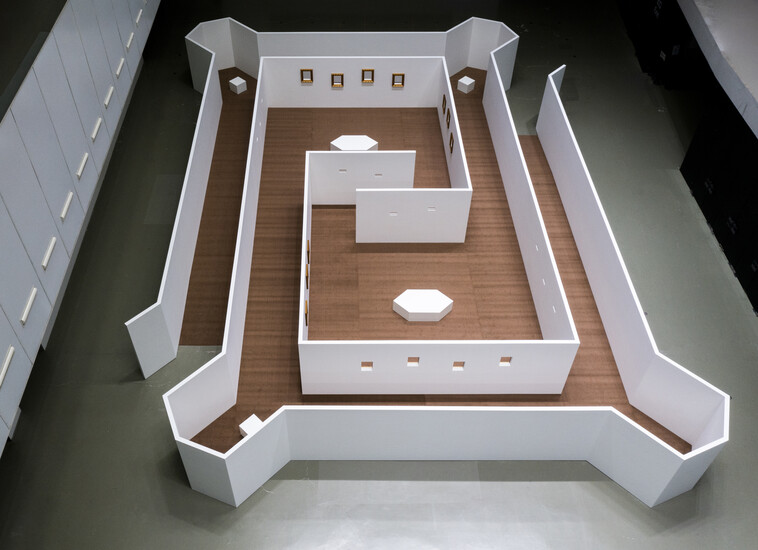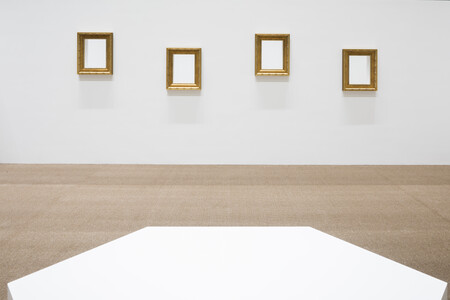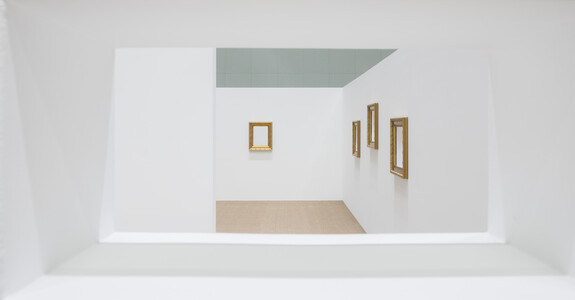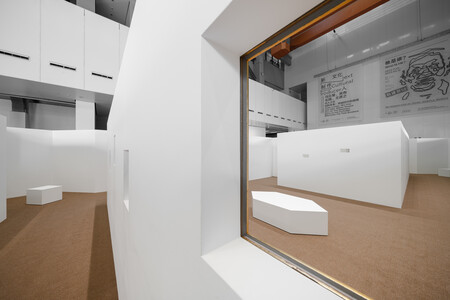In 1987, Geng Jianyi could not afford to cover the cost of fully constructing Tap Water Factory. Instead, he carried out small-scale experiments in which his students played the part of the audience and the artwork.
“In 1988, I did an experiment for Tap Water Factory, creating walls that showed the frames on the walls as emptied out. When people stood near them, they were seen in the frame as if as a portrait [of themselves]. This installation is about seeing and being seen. People walk into the space to see and are, instead, viewed; perhaps are mistaken for a work. Where everyone has two roles – as audience and as artwork – viewers share the experience with each other. It helps them understand. The idea is simple; that the communication barrier would be partially solved by the participants themselves. But the experiment was not a great success.”
—Geng Jianyi
This installation work was the first of many experiments with interaction between “art and audience” that Geng Jianyi made through his career. Geng Jianyi graduated from the China Academy of Art in 1985. The following year, he became a member of the Pond Society in Hangzhou, which was a small group of artists who worked on performative art projects together. The experience developed Geng Jianyi’s interest in collective activities as a means of producing artworks that could be readily understood by the audience.
The initial prompt to Geng Jianyi’s idea about the relationship between art and audience, which he explores in Tap Water Factory, came in 1985 following reactions to his graduation work. Here, he personally experienced the difficulty viewers can have in appreciating a form of art which departs from familiar standards of artistic expression. Following his graduation in 1985, easing the difficulty that audiences have in understanding art became a central aim of the activities Geng Jianyi explored as art henceforth. Seeing this difficulty as a problem of “distance” he decided to try getting the audience involved, thus creating Tap Water Factory as a participatory experience he hoped would erase the sense of distance.
Detail pictures:














